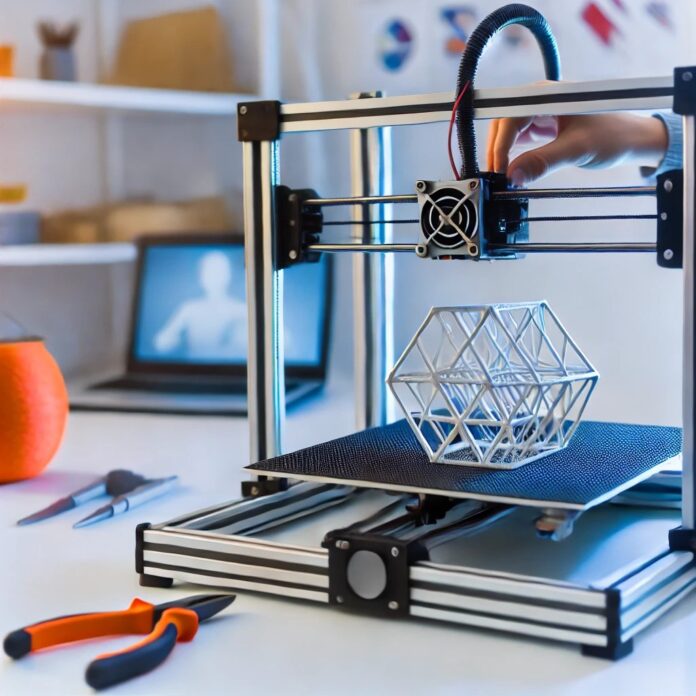Introduction to 3D Printing
3D printing, also known as additive manufacturing, is a groundbreaking technology that has revolutionized various industries. It involves creating three-dimensional objects from digital files by layering materials. This innovative process offers numerous advantages over traditional manufacturing methods, including greater design flexibility, reduced waste, and faster production times.
How 3D Printing Works
it begins with a digital design, typically created using computer-aided design (CAD) software. This design is then converted into a format that the 3D printer can read, usually a stereolithography (STL) file. The printer reads the file and lays down successive layers of material, such as plastic, metal, or resin, to build the object from the bottom up.
Types of 3D Printing Technologies
Several types of technologies are available, each suited to different applications. The most common types include:
- Fused Deposition Modeling (FDM): This technology uses a thermoplastic filament, which is heated and extruded through a nozzle to build the object layer by layer.
- Stereolithography (SLA): SLA uses a laser to cure liquid resin into solid layers, offering high precision and smooth surface finishes.
- Selective Laser Sintering (SLS): SLS involves using a laser to fuse powdered material, such as nylon or metal, into solid structures.
Applications of 3D Printing
The versatility has led to its adoption across various sectors, each benefiting from the unique capabilities of this technology.
Healthcare and Medicine
In the healthcare industry, 3D printing has enabled the creation of custom prosthetics, dental implants, and even biological tissues. Surgeons can use 3D-printed models to plan complex surgeries, enhancing precision and outcomes. The technology has also paved the way for personalized medicine, where drugs and treatments can be tailored to individual patients.
Aerospace and Automotive Industries
The aerospace and automotive industries leverage 3D printing to produce lightweight, high-strength components that improve performance and fuel efficiency. Rapid prototyping allows engineers to test and refine designs quickly, accelerating the development process. Additionally, 3D printing enables the production of complex geometries that are difficult or impossible to achieve with traditional methods.
Consumer Products and Fashion
In the realm of consumer products, 3D printing allows for the customization of items such as footwear, eyewear, and accessories. Designers can create unique, made-to-order pieces that cater to individual preferences. The fashion industry has also embraced 3D printing to produce intricate garments and accessories, pushing the boundaries of design and innovation.
Advantages of 3D Printing
3D printing offers several key benefits that make it a valuable tool across various applications.
Design Flexibility
One of the most significant advantages of 3D printing is the freedom it provides in design. Complex geometries and intricate details that are challenging to achieve with traditional manufacturing methods can be easily realized with it. This flexibility allows designers to explore new possibilities and create innovative products.
Reduced Waste and Material Efficiency
Traditional manufacturing processes often involve subtractive methods, where the material is removed from a larger block to create the final product. This approach generates significant waste. In contrast, it is an additive process, where material is added layer by layer, resulting in minimal waste. This efficiency is particularly beneficial when working with expensive or rare materials.
Rapid Prototyping and Production
3D accelerates the prototyping and production stages, enabling faster iterations and reducing time-to-market. Designers can quickly produce and test multiple versions of a product, making adjustments as needed. This agility is crucial in industries where innovation and speed are key competitive advantages.
Challenges and Future of 3D Printing
Despite its many benefits, it also faces challenges that need to be addressed for wider adoption and advancement.
Material Limitations
Currently, the range of materials available for it is limited compared to traditional manufacturing methods. Expanding the variety of printable materials, particularly high-performance and sustainable options, is essential for broadening the applications of 3D.
Cost and Accessibility
While the cost of it has decreased over the years, it remains a barrier for some industries and small businesses. Continued advancements in technology and economies of scale are needed to make 3D more accessible and affordable.

Regulatory and Quality Standards
it becomes more prevalent in critical industries such as healthcare and aerospace, establishing regulatory and quality standards is crucial. Ensuring the reliability and safety of 3D-printed components will be essential for gaining widespread trust and acceptance.
Conclusion
3D printing is a transformative technology with the potential to reshape numerous industries. Its ability to create complex designs, reduce waste, and speed up production makes it a powerful tool for innovation. While challenges remain, continued advancements in materials, cost reduction, and regulatory standards will drive the future growth of 3D printing, unlocking new possibilities and applications.



